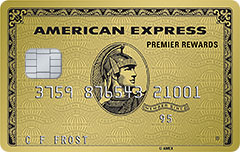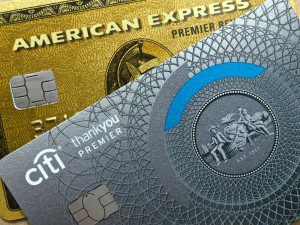
Should I Keep the Premier Rewards Gold Card and the Platinum?
[Offers contained within this article may no longer be available] First, note that there’s a big difference between whether or not you should sign-up for both of these cards and

[Offers contained within this article may no longer be available] First, note that there’s a big difference between whether or not you should sign-up for both of these cards and

[Offers contained within this article may no longer be available] American Express is getting creative with its latest offer for the Premier Rewards Gold Card. The new (targeted) offer is

[Offers contained within this article may no longer be available] The American Express® Premier Rewards Gold Card is often regarded as one of the top premium travel credit cards. It earns

[Offers contained within this article may no longer be available] The American Express® Premier Rewards Gold Card and the Citi Thankyou Premier are two of the best travel rewards credit cards

[Offers contained within this article may no longer be available] A lot of people seem to ask which AMEX card is best for them: The American Express Platinum or the Premier

Two of the best travel rewards credit cards out available right now have to be the Chase Sapphire Preferred and the American Express Premier Rewards Gold Card. I’ve got both of
| Cookie | Duration | Description |
|---|---|---|
| cookielawinfo-checkbox-analytics | 11 months | This cookie is set by GDPR Cookie Consent plugin. The cookie is used to store the user consent for the cookies in the category "Analytics". |
| cookielawinfo-checkbox-functional | 11 months | The cookie is set by GDPR cookie consent to record the user consent for the cookies in the category "Functional". |
| cookielawinfo-checkbox-necessary | 11 months | This cookie is set by GDPR Cookie Consent plugin. The cookies is used to store the user consent for the cookies in the category "Necessary". |
| cookielawinfo-checkbox-others | 11 months | This cookie is set by GDPR Cookie Consent plugin. The cookie is used to store the user consent for the cookies in the category "Other. |
| cookielawinfo-checkbox-performance | 11 months | This cookie is set by GDPR Cookie Consent plugin. The cookie is used to store the user consent for the cookies in the category "Performance". |
| viewed_cookie_policy | 11 months | The cookie is set by the GDPR Cookie Consent plugin and is used to store whether or not user has consented to the use of cookies. It does not store any personal data. |
